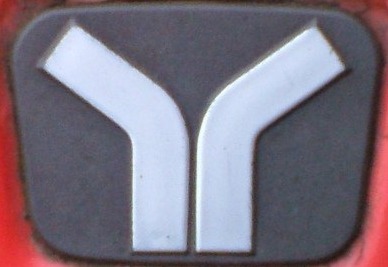
Yugo Digital Paint Library
- The Yugo was marketed in the United States from 1985 to 1992 by Malcolm Bricklin, with a total of 141,651 sold – peaking at 48,812 in 1987 and falling to 1,412 in 1992.
- Yugo was a subcompact vehicle built by Zastava Automobiles.
1980 - 1985 Yugo Paint Chart
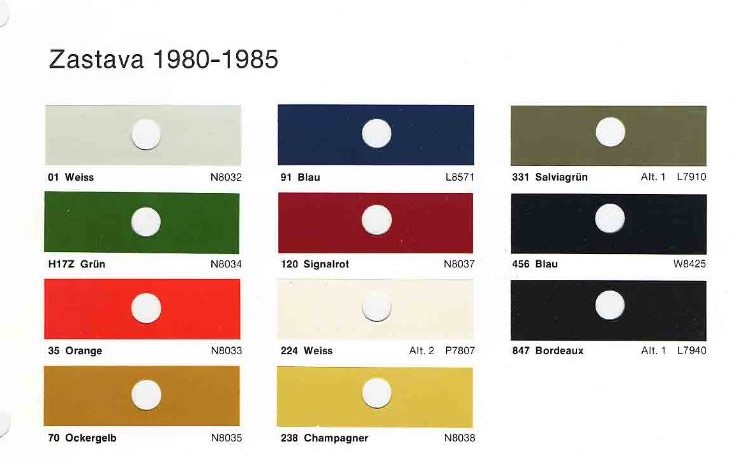
1986 Yugo Paint Chart
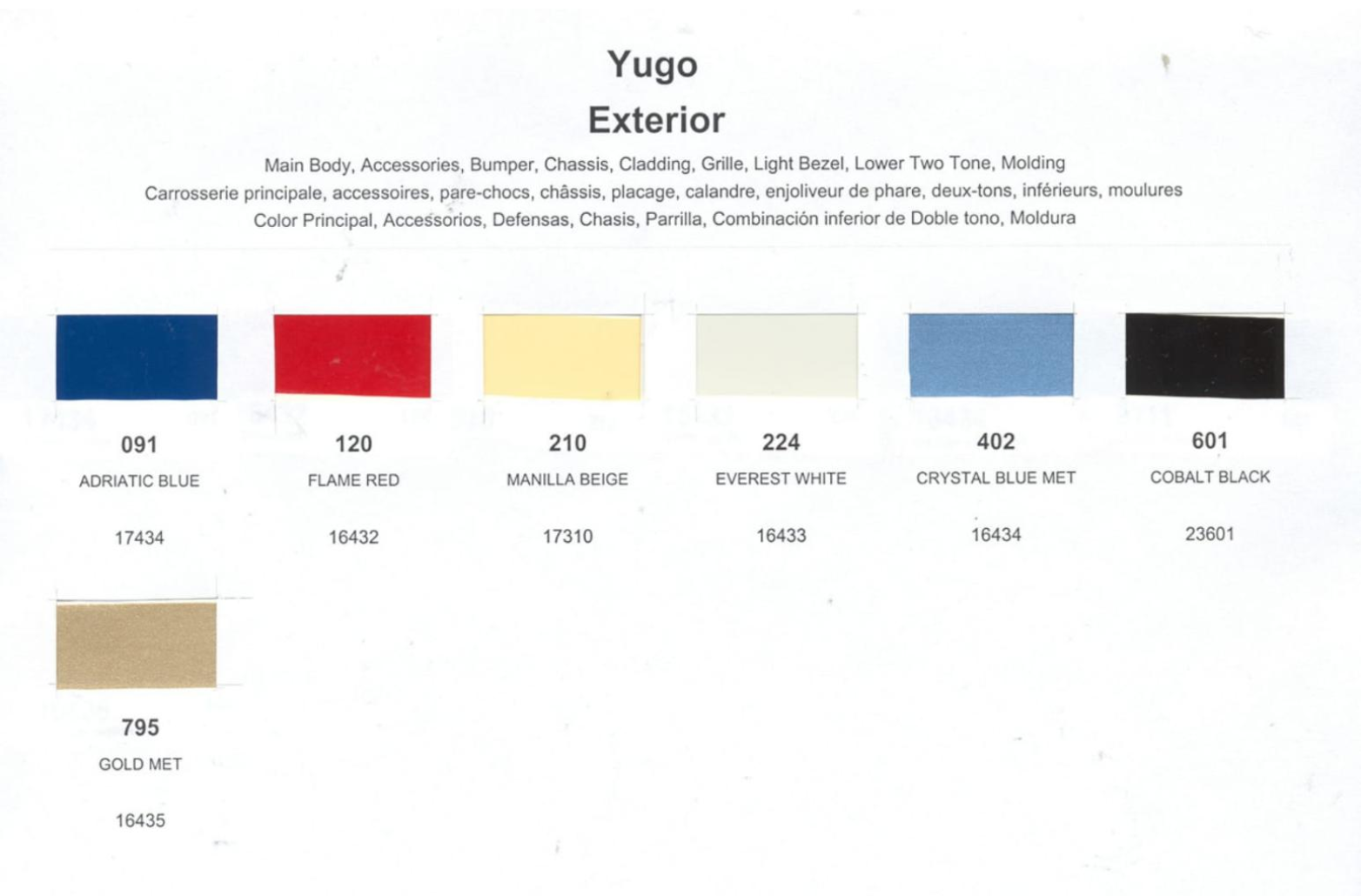
1987 Yugo Paint Chart
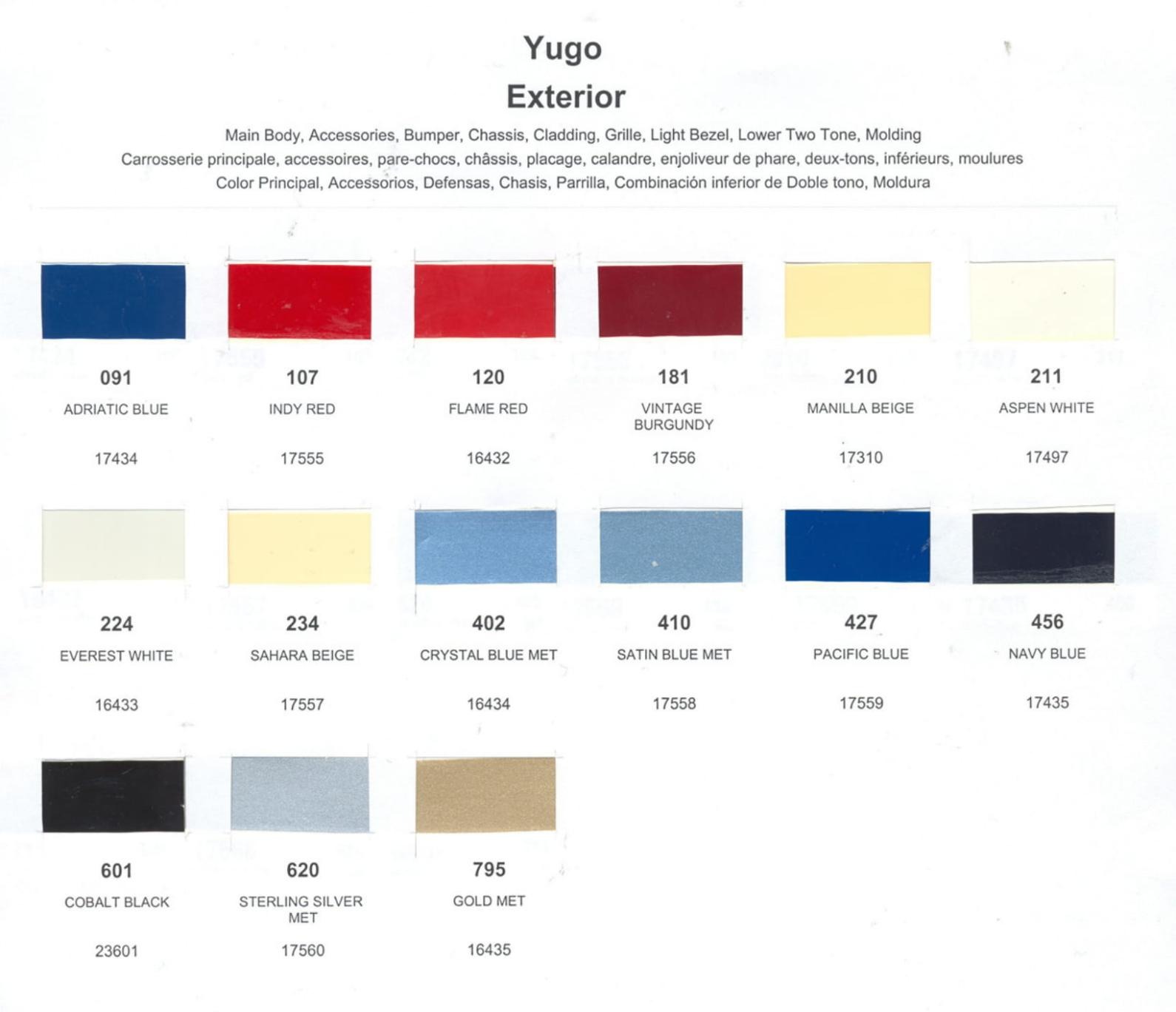
1988 Yugo Paint Chart
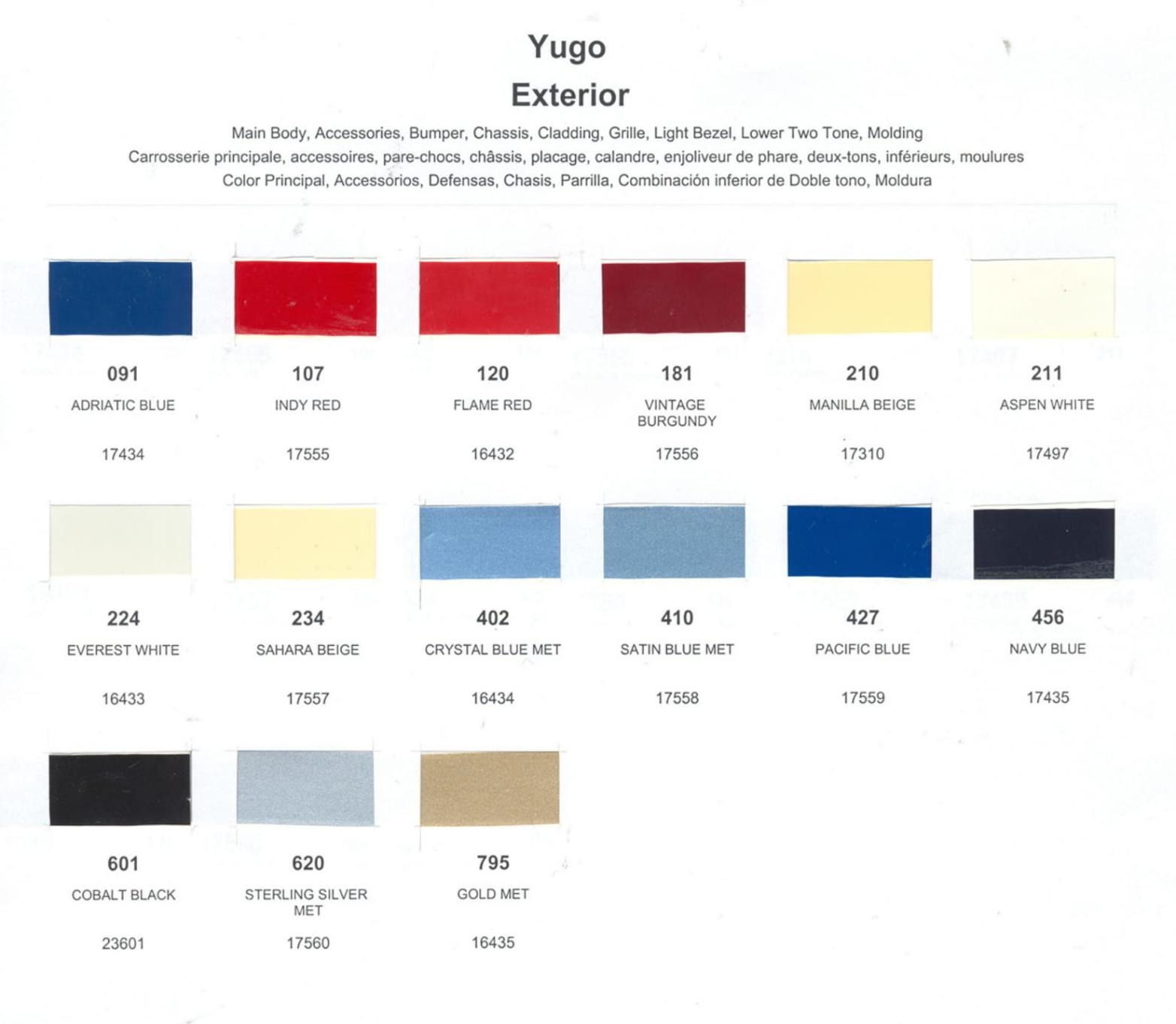
1989 Yugo Paint Chart
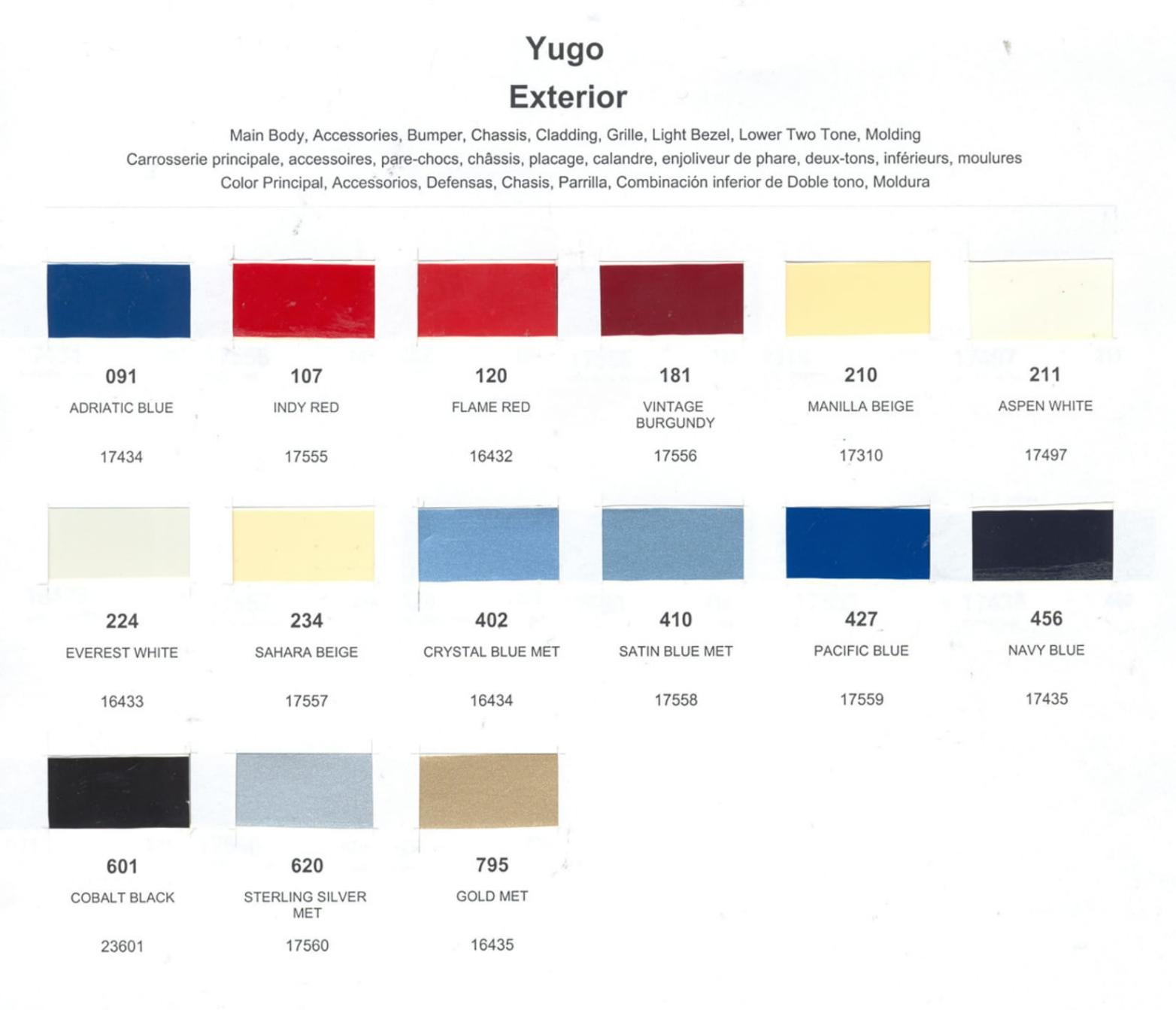
1990 Yugo Paint Chart

Complete Paint code table from hdpaintcode.com
The paint charts above are for USA Yugo vehicles, the table below is for worldwide Yugo vehicles.
Yugo History
The Yugo, a small, affordable car produced in the former Yugoslavia, has a unique and interesting history. Here's an overview:
Origins and Production: The Yugo was a product of Zastava Automobiles, a Serbian (then Yugoslavian) car manufacturer. It was first introduced in the early 1980s. The most famous model, the Yugo 45, was derived from the Fiat 127 and designed by Zastava in collaboration with Fiat of Italy.
International Sales, Including the U.S.: The Yugo was exported to a number of countries, including the United States. In the U.S., it was marketed as an affordable, no-frills vehicle, gaining initial popularity due to its very low price. The Yugo entered the U.S. market in 1985 and was sold through a network of dealers.
Design and Features: The Yugo was a compact car, known for its simplicity and basic features. It was not equipped with the luxuries or advanced technologies found in more expensive cars, but it provided basic transportation at a very low cost.
Quality and Reception: The Yugo gained a reputation for being unreliable and of poor quality, especially in the U.S. market. It became the subject of jokes and criticism, partly due to mechanical failures and partly due to its basic design in a market that favored larger, more feature-rich cars.
Impact of Yugoslav Wars: The onset of the Yugoslav Wars in the 1990s severely impacted Zastava's production capabilities. The factory in Kragujevac, where the Yugo was produced, suffered damage during NATO's bombing of Yugoslavia in 1999.
End of Production: Production of the Yugo continued in various forms until the early 2000s. The last Yugo, by then known under different model names and with several updates, rolled off the production line in November 2008.
Cultural Legacy: Despite its reputation, the Yugo holds a cultural legacy as a symbol of a particular era in automotive history. It represents an ambitious, albeit ultimately unsuccessful, attempt to enter the competitive international automobile market during a complex socio-political period.
In summary, the Yugo's history is marked by its origins in a unique political and economic context, its brief popularity as an affordable car in international markets, and its struggles with quality perception and the impact of geopolitical events.